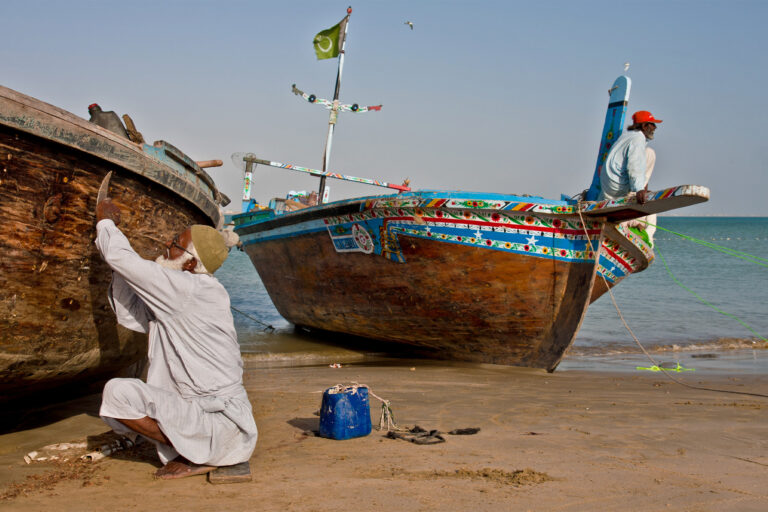Impact of Sea Level Rise on Pakistan’s Coastal Communities
Pakistan’s coastal areas, notably along the Arabian Sea, are facing significant challenges due to the rising sea levels attributed to climate change. The impact of sea level rise on Pakistan’s coastal communities is multi-faceted and poses a threat to the environment, economy, and livelihoods of the people living in these regions.
Challenges Faced by Pakistan’s Coastal Communities
One of the critical issues is the increased risk of flooding and erosion, which can lead to loss of land, displacement of people, and damage to infrastructure. This threatens homes, agriculture, and industries located in these vulnerable areas. Additionally, saltwater intrusion into freshwater sources jeopardizes the availability of drinking water and agricultural productivity, further exacerbating the hardships faced by the coastal population.
Adaptation and Mitigation Strategies
Efforts to mitigate the impact of rising sea levels in Pakistan include the construction of coastal defenses such as seawalls and embankments, mangrove plantation to act as natural buffers against the sea, and early warning systems to alert communities about impending disasters. Furthermore, promoting sustainable practices and raising awareness about climate change adaptation are essential steps towards building resilience in these at-risk regions.
Future Outlook for Pakistan’s Coastal Communities
As sea levels continue to rise globally, it is crucial for Pakistan to invest in long-term adaptation measures to safeguard its coastal communities. Collaboration between government agencies, NGOs, and local communities is vital to address the challenges posed by sea level rise effectively. By taking proactive steps now, Pakistan can better protect its coastal areas and ensure the well-being of its inhabitants for generations to come.
Challenges Faced by Displaced Fisherfolk
Displaced fisherfolk encounter a myriad of challenges that profoundly impact their livelihoods, well-being, and cultural heritage. As coastal development, environmental degradation, and climate change accelerate, these vulnerable communities face escalating threats to their traditional way of life.
One significant challenge is the loss of access to fishing grounds. Displaced fisherfolk often find themselves relocated to areas where the marine ecosystem differs significantly, affecting both the type and quantity of fish available for catch. This shift can lead to decreased income and food insecurity, exacerbating poverty among these marginalized groups.
Moreover, forced displacement disrupts social structures and community networks that are crucial for sharing knowledge and resources related to fishing practices. The loss of such collective wisdom hampers the intergenerational transmission of skills, further undermining the sustainability of fishing livelihoods.
Additionally, inadequate government policies and insufficient support mechanisms contribute to the challenges faced by displaced fisherfolk. Lack of access to credit, technology, and training opportunities hinder their ability to adapt to new environments or explore alternative livelihood options beyond fishing.
This confluence of factors underscores the urgent need for comprehensive interventions that address the multifaceted challenges confronting displaced fisherfolk. Equitable land rights, sustainable resource management, social protections, and community empowerment initiatives are essential to safeguard the interests and well-being of these vulnerable communities in the face of ongoing environmental and social transformations.
Adapting to Environmental Changes: A Fisherfolk’s Struggle
Living by the rhythms of nature, fisherfolk face a unique challenge when their traditional ways intersect with rapidly changing environments. Climate change, pollution, overfishing, and habitat degradation all pose threats to their livelihoods.
Challenges and Solutions
While managing fish stocks for sustainability, updating fishing techniques, and embracing alternative livelihoods like eco-tourism can offer hope, it’s essential for fisherfolk to adapt and innovate to thrive in the face of ecological shifts.
Future Implications of Climate Change on Pakistan’s Fisheries
Breaking Down the Headlines
The future implications of climate change on Pakistan’s fisheries are crucial to the sustainability of the aquatic ecosystem in the region. Rising sea temperatures, changing currents, and ocean acidification are likely to impact fish stocks and marine life diversity.
The Bigger Picture
When considering the broader context, the effects of climate change on Pakistan’s fisheries highlight the interconnectedness of environmental systems. This issue underscores the importance of global efforts to mitigate climate change and protect marine resources for future generations.
What This Means Going Forward
Looking ahead, it is imperative for Pakistan to implement adaptive strategies such as sustainable fishing practices, marine conservation initiatives, and eco-friendly policies to safeguard its fisheries sector. Collaboration with international organizations and research institutions will be essential in addressing the challenges posed by climate change and ensuring the long-term viability of Pakistan’s marine ecosystem.
